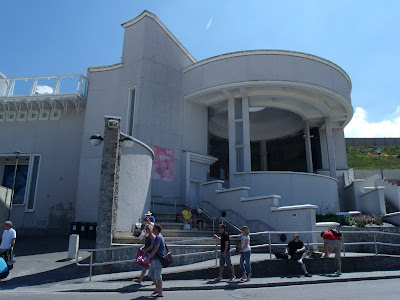I met someone today (Johnny Kalsi) that I must have met about 15 years ago, although we did not remember each other; we know that we were probably in the same place, at the same time.
Around 15 years ago I used to help a friend run a boys club in Hounslow, and we would occasionally invite the Dhol Foundation to come and entertain the lads and their families.
Today I went to St Austell because I had heard the Dhol Foundation were running some drum workshops in the town, and were also taking part in a parade.
The foundation is run by Johnny Kalsi, who also plays in ‘The Imagined Village’, whom we saw at the St Ives Festival year:
I took the opportunity to join in a workshop and have a go at the drums. I was probably oldest person trying it out, most of the others appeared to be between 2 & 12years old, but I’ve got to the stage where I don’t mind making a bit of a fool of myself.
One member of the foundation gave me what he called a ‘Mum & Dad’ training session, but I was useless at it so I gave up after a couple of minutes.
After that I watched them perform in the town square. Here is a very short video of the performance:
Then I took the opportunity to talk to Johnny, who told me about all the things he is currently involved in.
Johnny Kalsi
By now it was time for the parade. So I followed the group as they joined with the NoFit State Circus, who along with the Dhol Foundation will be in residence at The Eden Project during August this year. Some local children with colourful umbrellas also took part in the parade.
Here are a few pictures of the parade:






















